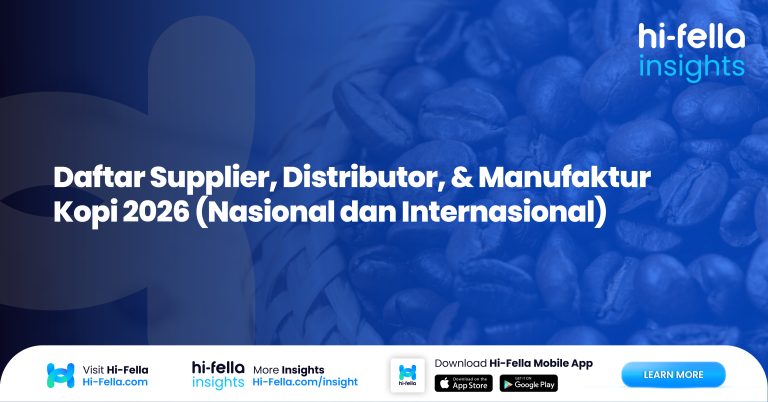Economic performance in the second quarter of this year has captured the attention of policymakers, businesses, and global investors alike. With gross domestic product (GDP) expanding by 5.12%, inflation holding near 2.37%, and expectations of the central bank maintaining its policy rate at 5.25%, Indonesia stands at a crucial intersection of growth resilience and monetary stability.
This delicate balance between sustaining growth momentum and managing price stability is not just a macroeconomic story—it is the foundation of business confidence and long-term development. To understand how these forces interact, we must break down the drivers of GDP growth, examine inflation dynamics, and analyze monetary policy in both domestic and global contexts.
Table of Contents
Q2 GDP Growth at 5.12% — A Signal of Resilient Domestic Demand
The headline GDP number of 5.12% in Q2 reflects the resilience of Indonesia’s domestic economy. Despite global uncertainties—from supply chain disruptions to geopolitical conflicts—several sectors have contributed to this steady expansion.
1. Sectoral Drivers of Growth
- Manufacturing: The manufacturing sector showed steady recovery, supported by strong demand for consumer goods and a rebound in industrial exports.
- Services: Tourism, transport, and financial services posted significant gains as mobility restrictions eased and consumer confidence improved.
- Exports: While external demand was uneven due to global headwinds, commodities such as palm oil, coal, and nickel continued to provide critical support.
2. Comparison with Previous Quarters
- Q1 recorded growth of just under 5%, indicating an acceleration into Q2.
- Compared to last year, momentum has improved despite slowing external demand, underlining the importance of domestic consumption as the growth engine.
3. Regional Benchmarking
- India posted over 7% growth, driven by robust services and technology exports.
- Vietnam grew by about 6%, supported by its manufacturing hub status.
- China recorded slower expansion near 4.7%, reflecting structural adjustments and weaker property markets.
Indonesia’s 5.12% sits comfortably in the middle of this regional spectrum, signaling a healthy, balanced recovery. The sustainability of this growth, however, depends on how the country navigates external shocks and internal policy execution.
Inflation Nearing 2.37% — Controlled but Fragile
At 2.37%, Indonesia’s inflation remains within the central bank’s target range, a significant achievement amid global price volatility. However, the outlook remains fragile, requiring close monitoring of several factors.
1. Food and Energy Prices
- Stable rice and staple food prices have anchored headline inflation.
- Global energy prices have moderated compared to last year, but geopolitical risks could quickly reverse this trend.
2. Core Inflation Pressures
Core inflation, which excludes volatile food and energy, suggests moderate upward pressure from wages and service costs. While manageable, it indicates that domestic demand is contributing to price stickiness.
3. Regional & Global Comparison
- ASEAN peers such as Thailand and Malaysia have inflation rates hovering around 2–3%, broadly similar to Indonesia.
- Developed markets like the US and EU are battling higher inflation near 3–4%, highlighting Indonesia’s relative stability.
4. Risks Ahead
- Currency fluctuations: A weaker rupiah could raise import costs, especially for fuel and raw materials.
- Global commodities: Any surge in oil or food prices due to geopolitical tensions could quickly push inflation higher.
Thus, while inflation is currently under control, it remains vulnerable to both global shocks and domestic supply constraints.
Monetary Policy Outlook — Why a 5.25% Rate Hold is Expected
Indonesia’s central bank, Bank Indonesia (BI), is widely expected to hold its policy rate steady at 5.25%. This stance reflects a careful balancing act between supporting growth and safeguarding financial stability.
1. Supporting Growth
With GDP growth above 5% and inflation contained, BI has space to prioritize stability without tightening too aggressively. Lower rates might stimulate demand but could risk capital outflows in today’s uncertain global environment.
2. Inflation Containment
Keeping the rate at 5.25% maintains credibility in BI’s inflation-fighting stance. A rate cut too early might stoke inflationary pressures, while a hike could unnecessarily slow domestic consumption.
3. Capital Flows and Exchange Rate Stability
Emerging markets are particularly sensitive to global capital movements. Maintaining an attractive interest rate differential helps Indonesia protect the rupiah from excessive volatility.
4. Global Central Bank Context
- The US Federal Reserve is cautious, signaling a slower pace of rate cuts due to lingering inflation.
- The European Central Bank (ECB) continues to focus on inflation containment, keeping policy relatively tight.
- The Bank of Japan is shifting away from ultra-loose policy, a potential source of global market volatility.
In this context, BI’s steady approach reflects prudence, anchoring investor confidence while giving the economy room to grow.
Global Events and Their Spillover Effects on Indonesia’s Economy
Indonesia’s macroeconomic trajectory cannot be analyzed in isolation. A range of external risks could reshape growth, inflation, and investment flows.
1. US-China Trade Dynamics
Escalating trade tensions or technology restrictions could disrupt global supply chains, affecting Indonesia’s export-oriented industries such as electronics and textiles.
2. Fed Rate Trajectory
If the Fed maintains higher rates for longer, emerging markets like Indonesia could face capital outflows, currency depreciation, and tighter financing conditions.
3. Energy Price Volatility
Middle East tensions and the ongoing Russia-Ukraine conflict pose risks to oil and gas prices. As an energy exporter and importer, Indonesia faces a double-edged impact: higher export revenues but also increased domestic subsidy burdens.
4. Investor Sentiment
Global uncertainty tends to heighten investor caution. A resilient domestic economy and credible monetary policy become critical in attracting stable capital inflows amidst global turbulence.
By preparing for these spillover effects, Indonesia can position itself as a stable destination for investment, leveraging its domestic strengths while cushioning against external shocks.
Join Hi-Fella to Connect with Global Business Leaders
In an interconnected global economy, understanding macroeconomic signals is only the first step. The real value comes from turning insights into opportunities. That’s where Hi-Fella comes in.
Hi-Fella is more than a platform—it is a bridge connecting suppliers, buyers, and industry leaders worldwide. Whether you are a manufacturer looking to expand exports, an investor seeking reliable partners, or a policymaker engaging with global stakeholders, Hi-Fella offers tools to build meaningful connections.
By joining Hi-Fella, you gain access to:
- Global networks: Connect with trusted partners across industries and geographies.
- Market intelligence: Stay updated on trade policies, compliance requirements, and economic shifts.
- Business opportunities: Translate macroeconomic insights—like GDP growth, inflation trends, and monetary policies—into concrete strategies for global trade.
As Indonesia continues to navigate the global economic landscape, professionals and businesses that combine knowledge with networks will be best positioned to thrive.
So don’t just watch the numbers—act on them.








